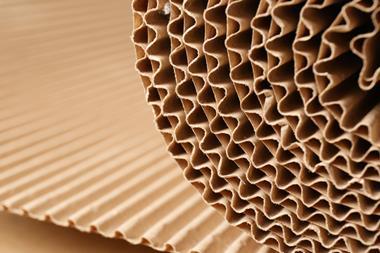Demand for corrugated in Europe is set to continue growing, but it is unlikely to grab a large share of the plastic packaging market without a highly focussed effort, according to a new report into the state of the packaging sector.
The growth of ecommerce ensures a bright future for corrugated, but it is cartons that are most likely to capitalise on the move away from single use plastic.
The report, from specialist European packaging consultancy NOA PRISM, gives a detailed assessment of corrugated prospects across all the different retail channels and the impact of changes in these channels on future demand.
Despite being a mature market, high demand for corrugated over the last two years has seen growth of more than 3.2% year-on-year, adding an extra 3,163 Msm of incremental corrugated volume across Europe.
Corrugated (Msm) production will continue growing well for the next five years at more than 2.7% per annum, then reducing slightly to around 2.5% for the following five years to 2028.
Neil Osment, managing director of NOA PRISM, which works closely with FEFCO, ECMA and ICCA to deliver market insights, attributes the growth of corrugated to the rapidly expanding ecommerce market.
An eventual slowdown in growth will occur due to rationalisation and consumer-led demand for right-sizing. In turn, technical barriers and high investment costs are likely to prevent corrugated capturing any significant market share in the move away from single-use plastic (SUP), although the use of corrugated discs for pizzas as an alternative to plastic has proved that opportunities are available.
“Since our last report on the European corrugated sector in 2016, the world of retailing has become much more complex,” said Neil. “The opportunities for corrugated to substitute plastic will only happen if corrugated can overcome the significant technical hurdles to truly challenge plastics. Current signs are that brands and retailers are more likely to favour other fibre-based materials such as cartons, ahead of corrugated.”
The Strategic European Corrugated Report, based on extensive research and interviews with key brand owners and retailers, analyses each retail channel and the likely impact of changes in each on future corrugated demand.
As well as the growth in demand for corrugated fuelled by the growth of ecommerce, there has been increased demand for corrugated in the form of shelf-ready packaging (SRP), which has had to diversify into three-pack formats – display, multi-faced and single-faced. NOA PRISM predicts this growth for SRP will also slow down, as demand moves further away from ‘bricks and mortar’, and towards ecommerce.
Neil said: “Each retail channel has different demands. Discounters require attractive, sturdy and quick-to-open large format, high sided displays, while large bricks and mortar stores favour traditional shelf-ready packaging. In turn, convenience stores require much smaller single-facing formats as well as low cost transit packaging.
“Then we have the most recent phenomenon in retail, ecommerce, which doesn’t require shelf-ready packaging at all. The big dilemma for brand owners is exactly how they should interact with this growing sector of the retail market, at the same time satisfying the needs of their existing, traditional market.”
The Strategic European Corrugated Report also looks at the demand for paper, which has seen a big increase over the last 18 to 24 months, while at the same time paper supply has been tight. Future predictions are that this demand will ease, with brands and retailers favouring performance packaging, and an increasing move towards using recycled paper grades.
The next report from NOA PRISM will look into SUPs and the extent to which these are being replaced by corrugated and cartons.
Neil added: “We are looking for experts and stakeholder within the sector to talk to about this important topic and would be pleased to hear from anyone who would like to contribute to our report and the wider debate.”









